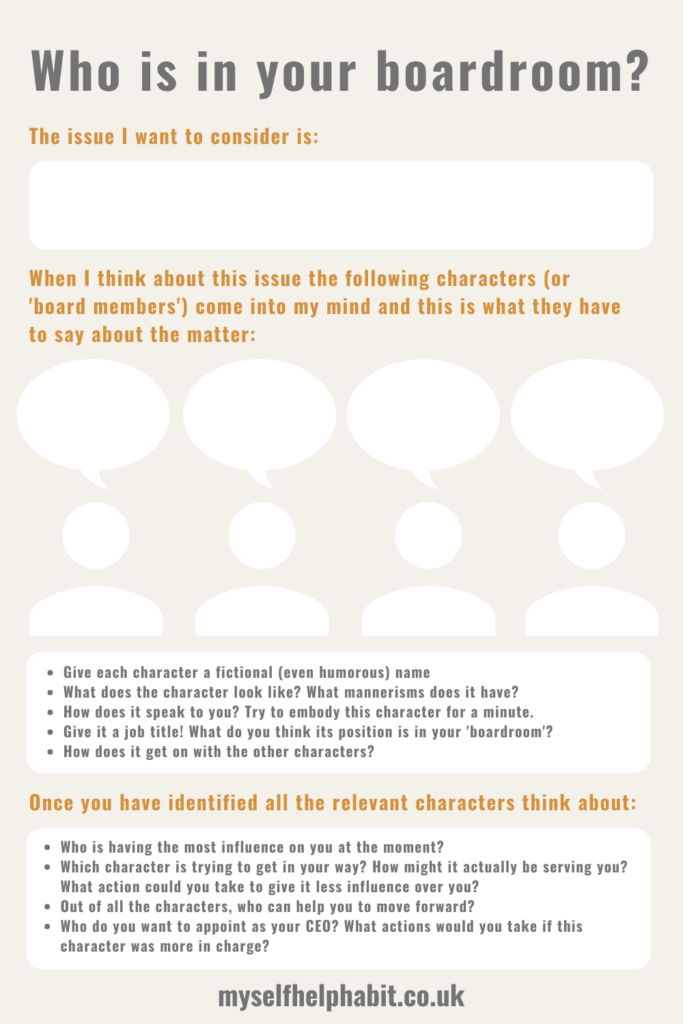
Life after coach training…
Business planning, credentialing and exploring creative approaches to coaching!
I can happily announce that I have completed the taught element of my Postgraduate Certificate in Business and Personal Coaching after months of attending tutorials that have kept me well and truly enthused about entering the coaching profession and having spent many hours practising my coaching with willing volunteers. So, as this part of my journey comes to an end, what is next?
Well…the work continues! I am currently spending most of my days flitting between the roles of mum/home school teacher, blogger, coach and student. In between teaching, keeping two energetic boys entertained all day, and dishing out snack after snack(!), I have been swotting up and getting on with the research for the three essays that I need to write and preparing to have a live recording of my coaching assessed. While I get all that completed I am going to continue to work with volunteer clients and will of course keep up my personal development activities!
I have also realised that I need to get a bit more business savvy if I want to start up on my own so I have recently embarked on a business development programme. I am excited about all the ideas, possibilities and actions that have been generated as I have worked through the programme and towards setting up my own coaching business.
One thing I have discovered as I have gone through the early stages of setting up a business is that it is important to find a pace that feels congruent with where I am in my life right now and my coaching journey. I have done this by visualising what I want to achieve in my business and why, mapping out small, practical steps that I need to take over the next few months and exploring the mindset blocks that often creep into the process! Having a network of peers who are going through the same qualification as me has also helped immensely for moral support and encouragement as well as learning from coaches who have been running their own businesses for a few years.
If you have been thinking about having some coaching or if you are interested in becoming a coach then take a look at what I have studied during the last month of my course and try out the creative coaching techniques that I have included below. These will enable you to:
- Sort through the ‘characters’ in your mind who may be hindering your progress and tune into the ones who can help you to move ahead
- Gain clarity or a new perspective on a situation by taking some inspiration from the great outdoors
- Express your thoughts and feelings through the act of free writing
What have I been studying?
Creativity in coaching
I have discovered that coaching does not have to be constrained to a 1-1 conversation that takes place in a room or over a video call. Coaching sessions can actually be incredibly experimental and imaginative!
By finding creative ways to engage with clients and explore their issues we can help them to think differently about their situations, provide a safe space for them to fully express their thoughts and feelings, and come up with new and alternative ideas or solutions.
Coaches can work creatively in a number of different ways, such as noticing and unpacking the metaphors that a client uses, suggesting visualisation exercises (one of my favourites is The Ideal Day exercise), asking their clients to select picture cards or objects that represent how they feeling, encouraging clients to write down their reflections in a journal, or coaching clients outdoors and discovering meaning in the environment around them.
Coaching in organisations
As well as working 1-1 with individual clients, coaches also work within organisations either internally i.e. as an existing employee who has trained to be a coach (which is how I started out!) or they can be brought into organisations as external coaches. We learned how to ensure all parties are heard in triad meetings, where a coach will meet with the coachee and any other interested parties in the organisation to agree the objectives and practicalities of the coaching relationship. We thought about how we would approach common workplace issues and practised putting together pitches for coaching programmes. We also went through the different aspects involved in setting up a coaching business (e.g. pricing, insurance, location, technology and equipment needs, marketing methods etc.)
Transactional Analysis
This approach, developed by psychiatrist Eric Berne, helps us to understand how we relate to others. We explored the different ego states that we adopt when we interact with other people (i.e. Parent, Adult, and Child) and how our responses are influenced by our past experiences. We looked at the dynamics that may be going on in the exchanges we have with others and how we might get caught up in the ‘Drama Triangle‘, assuming the role of a Victim, Persecutor and Rescuer, when in difficult situations. We learned how to identify a client’s dominant drivers (i.e. to be perfect, be strong, try hard, hurry up, or please others) and help them to find ways to challenge and overcome any unhelpful behaviours resulting from these drivers.
Taking care of ourselves
Coaches support and enable their clients to deal with difficult and complex issues. This involves listening intently to clients for long periods of time, being fully immersed in sessions, and asking powerful questions or working through exercises that get below the surface of a presenting issue. As well as delivering coaching sessions, coaches may be running their own businesses and have other roles in addition to being a coach. In order for coaches to fulfil their different roles and responsibilities, and to ensure that they can continue to serve their clients, it is essential that they spend time on their own self-care, allowing themselves to rest and recharge. They should also engage in regular supervision so that they can take time to reflect on their practice, develop their skills and receive any support they may need.
Creative Coaching Tools and Techniques
Who is in your boardroom?
When we are mulling over a decision or issue that we are facing there will undoubtedly be many different thoughts whirling around our heads that could help us to move forward or keep us stuck right where we are.
If you examine these thoughts a little closer you will see that they are like voices that try and influence the action you take. One minute they might be telling you ‘You can’t do that’ or ‘You aren’t ready yet’ and in the next moment they might be willing you on, bellowing ‘You’ve got this. Go for it!’ Some of these voices may be akin to certain types of characters (for example, an inner cheerleader, critic, nurturer, judge, clown, cynic etc.) and may even be familiar to you as they might have been influenced by your parents or other authority figures from your childhood.
It can be helpful to separate out what each ‘character’ has to say about an issue that you are considering so that you can decide which voice you want to turn up and hear more from and which one you need to quieten down (thereby not allowing it to influence you too much!) Assigning humorous, fictional characters to these voices can also help you to detach yourself from them and take some of the sting out of the ones that are really holding you back.
Imagine for this exercise that your inner characters have all assembled into a boardroom to talk about an issue or decision that you are facing. Have a go at identifying which voices come up for you as you think through the issue or decision – Who are they? Do they have a particular character that you could assign to them? How are they influencing your response?
Click on the image to download the worksheet and find out who is in your inner boardroom and what they have to say to you.
Take a mindful stroll
This exercise is all about taking an issue or question that you have been pondering and getting outside to observe what you notice about your surroundings and determine whether anything connects with the issue or question you have.
The change of scenery may inspire some different thoughts, bring you some clarity or help you to generate more creative solutions to your problems. Bring a notebook with you if you want to capture your observations or insights.
As you go along:
- Keep your issue or question in mind
- Take some time to tune into your senses as you look around you (what can you see, hear, smell, and feel?)
- What aspects of your environment are you noticing? Do any of these things relate to your issue or question? Do they represent something or carry any particular meaning for you? Have you noticed something that struck an emotional response in you?
When I practised this coaching exercise, I found that it encouraged me to pay much more attention to my environment than I usually would. I observed the nuances in my surroundings and saw that there is lots of meaning to be found if you take the time to really look around you and just ‘notice what you notice’. I remember that I was feeling overwhelmed at the time and so I was picking up on different things that made me feel peaceful and comforted. The discussion I had with my coach (who was on the other end of the phone!) moved to how I could adapt my home environment to encompass the things that made me feel relaxed and grounded.
Get it all down on paper!
Writing down your thoughts and feelings and getting them out in the open can be a very cathartic process. The uninterrupted, non-judgemental and reflective space that a journal provides may also help you to generate fresh ideas or solutions to the problems you are experiencing. If you have an issue that is weighing on your mind then get out your notebook, try this exercise and see what comes out on the page!
Free writing exercise
- Decide what you want to write about – you may already have an issue that you want to consider or you may want to start with a question that allows you to ‘check-in’ with yourself such as ‘How am I feeling this morning?’, ‘What do I need today?’ or ‘How do I want to show up?’
- Then, without giving yourself time to over think things, set a timer to 10 minutes and write down literally whatever comes to your mind as you consider your question or issue.
- Be as open and as honest you possibly can. Don’t judge or try to interpret anything as you are writing, just get all your thoughts and feelings down on paper as they arise. It doesn’t need to be grammatically perfect or have the correct spellings (or even any punctuation.)
- When the timer goes off, stop writing! Look back at what you have written down and highlight any phrases, words, ideas or themes that you think are significant to the issue or question you are considering.
Now take a closer look at what has emerged from your writing.
- Are there any points or ideas that you want to keep in mind or action?
- As you look over your writing, what have you learned about yourself?
- What have you learned about the issue that you were writing about?
Want to know more about coaching?
Read through my other two articles, steps to becoming a coach and coach training update, which contain more free coaching tools plus further information on what I have been studying during my coaching qualification, my top tips for new coaches, and resources that I have found to be particularly useful.





